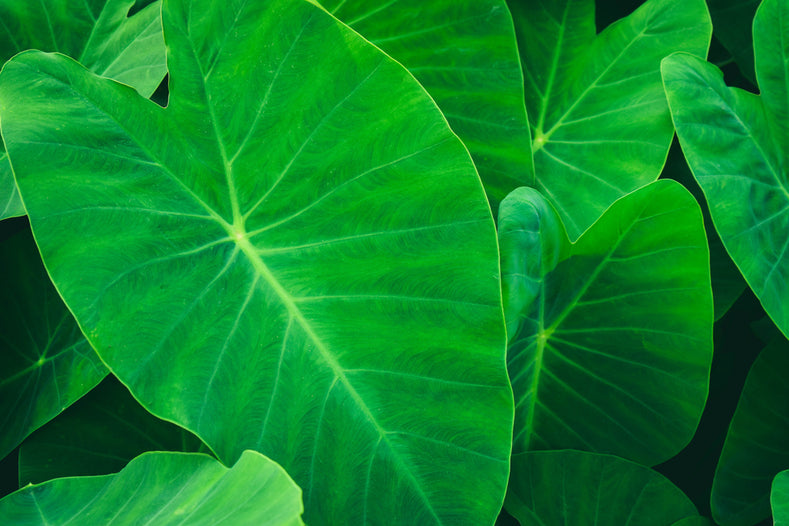Elephant ear plants are bold and dramatic exotic plants that are recognisable due to their large foliage. These oversized plants that bring a tropical atmosphere to any garden have gained popularity over the past few years due to their unique decorative foliage and low maintenance. Although elephant ears are often used for background plants or ground coverings, their most common use is as a center piece.
Planting and Growing Elephant Ear Tubers
Elephant ears are tropical and subtropical meaning they are native to regions such as Asia and eastern Australia. Due to their homeland climate being harsh and humid, they need warm soil and humidity to flourish. This also means that they need plenty of sunlight but if your location includes a little midday shade the plants will still flourish perfectly fine.
- Start by waiting until all signs of winter have gone as the soil needs to be 70 degrees or above before you can plant these tubers.
- As elephant ear tubers like loose, well-draining soil, you need to remove any clumps and stones by raking it. We also suggest adding some compost to the soil so that the tubers get all the nutrients they need.
- Dig holes approximately 2-3 inches deep and 2 to 4 feet apart from each other.
- Place the tubers in the holes so that the pointed edge is facing upwards and leave roughly 1 inch of space between the top of the tuber and the surface of the soil.
- Cover the elephant ear tuber with soil and water thoroughly. Aim to keep the soil moist without letting it get soggy. Ideally you want to let the first inch of water dry before watering the area again.
If you would prefer to plant your tubers early by preparing them in pots inside, then you should start the process 6-8 weeks before the winter frost is due to end. Plant the tubers in individual pots approximately 2-3 inches deep and perhaps add a heated mat under the pots to keep the soil warm.

Caring for Elephant Ears
As mentioned above, elephant ears are very low maintenance once the tubers have been planted. The only necessity is keeping the soil moist so that is replicates the tropical climates that elephant ears are accustomed to.


